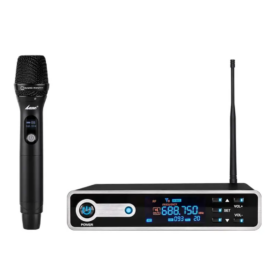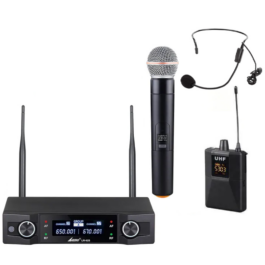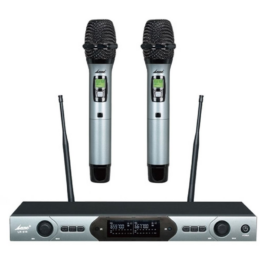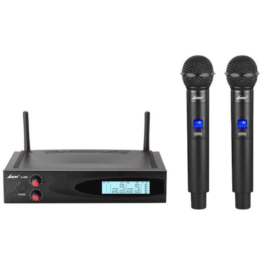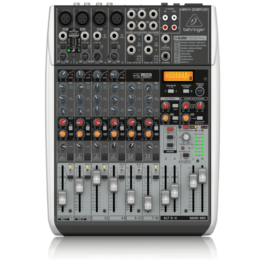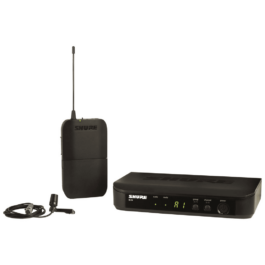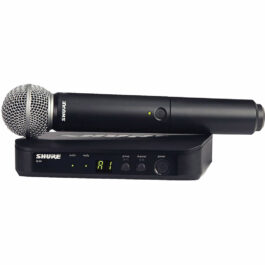
Buying the perfect PA System for your house of worship is a daunting task. You are bombarded with phrases like powered, passive, line array, flown or ground stacked; the list is endless!
To make matters worse, for each type of speaker, there are dozens of manufacturers all producing similar looking products.
The Best PA System for Your Church
Your first step when it comes to buying the perfect PA system is to understand that there is no one-size-fits-all option. There are hundreds of variables that will determine which is the best for you.
You need to consider the size of your building, how high your roof is, if you’re inside or outside, how many people attend your church services, do you have a band that needs to be amplified, what instruments are in your band, and so on.
Our first piece of advice when it comes to buying a new PA system for your church is that if you are not sure what you need, ask a professional to have a look at your building and let them guide your purchasing decision. If you would prefer to decide by yourself, the guide below will give you some of the essential points to consider before buying your next PA System for your church.
What Are You Using Your PA For
When it comes to amplification, there is a perfect solution to every situation. A guitar amp, for example, is tuned in such a way that it sounds excellent for guitars but will make vocals sound muddy and clouded.
When buying a PA system, you should first map out who will be using it. If you only need the PA system for the sermon, you can get away with a smaller, vocal-based PA like a Fender Passport system.
Of course, if you have a five-piece band with a 10-person choir, then you’ll need a more extensive PA system with a much bigger mixing desk.
Is the PA Fixed or Portable
A church is more than a building. It’s a collection of people who meet with a common purpose. For some churches, that means moving around from time to time.
Does your house of worship do a lot of outreach events? If so, you might require a fully portable PA System. On the other hand, if your church only meets in the church building itself, you can look at getting a fixed PA System.
What is your Worship Style

Traditional church congregations usually don’t require an over-the-top PA system. For the most part, they would have a piano or an organ which won’t need to be miked up, a few singers, and the preacher. In this case, a small PA system with a mixer with a handful of inputs will suffice.
If your church likes it loud, and plays mostly modern Hillsong style choruses as opposed to the more traditional hymns, then you’ll need something with a bit more power.
Budget
One of the most significant factors when it comes to selecting a new PA system is your budget. The best piece of advice is always to get the best system your budget will allow for, and future proofing your system will save you money in the long run.
How do you future proof your PA system? Buy getting something bigger than you need. If you need a mixer with 8-inputs, buy one with 12 or 16-inputs instead. Sure, many of those inputs will be wasted, but if you need more inputs, later on, you won’t need to buy a new mixer.
What Does a PA System Consist Of?

For your PA system to work, you need to ensure that you get all the basics. There’s nothing worse than trying to set up a new rig, only to discover that some elements are missing, and you need to head back to the shops.
Speakers – When talking about PA systems, most people think speakers. When buying your speakers, check to see if they are active or passive. Active speakers have built-in amplifiers and can be used as is. However, if you purchase passive speakers, you will also need a power amplifier to drive your speakers.
Power Amplifier – If you need a power amp, ensure that you buy the right one for your speakers. You would hate to under power your speakers and sound bad, or even worse; you don’t want to overpower your speakers and potentially damage them.
Mixer – The mixer is where the magic happens. All of your microphones and instruments plug into the mixer and this is where adjustments to the overall sound that the audience hears is made. You’ll be able to adjust the volume of each instrument or microphone, the bass and treble, add effects, etc. Make sure that your mixer has more inputs than you need so there’s room for future expansion, and that it’s not too complicated for your sound engineer to operate.
Effects Processors– Effects used to modify the sound of a voice, instrument or an entire mix include reverb, chorus, and echo or delay effects. Signal processing effects like compressors and limiters are also often used to govern or regulate the loudness of sounds. Many mixers have these effects built into them, but specialised outboard effects units are also available.
Microphones – If you’re replacing the PA system in your church, you already should have some microphones. But if you’re buying your first PA system, ensure that you don’t forget about the mics! Most of the microphones found on stage are dynamic microphones, but you may find a condenser microphone is best in some instances (for example to mic up a choir). You can find out about the difference between dynamic and condenser microphones here.
Monitors – Monitors are usually small speakers that are used on stage for the musicians to hear what all the other musicians are doing. For example, think of a drummer on stage; they will need to be able to hear what the other instrumentalists and singers are doing over the sound of their drums! In some cases, musicians will use in-ear monitors (high-quality earphones specially designed for stage use). Not all PA systems will require monitors, but if your band or choir is large, or they play loud, then on-stage monitoring is a must.
Cables – Once you’ve got all your gear selected, the last thing to double check is your cables. Make sure that you have one cable going to each element of your PA. Then buy a few more spare cables. Cables tend to break, especially in an environment where they are shared – so be sure to stock up so that you’re never in a situation where you’re running around trying to find a working cable 5-min before the doors open.
Shop for Live Sound Equipment online...
-
Birthday Sale Deal!
- Live Sound, Microphones
Lane LR-661 Single Wireless Mic System
-
R3,300R2,295FREE DELIVERY - Select options
-
Birthday Sale Deal!
- Live Sound, Microphones
Lane LR-625 Dual UHF Wireless Handheld & Headset Microphone System
-
R2,500R1,875FREE DELIVERY - Select options
-
- Out of Stock
- Live Sound, Microphones
Lane LR-616 Dual Handheld Wireless Microphone Set
-
R3,299R2,375FREE DELIVERY - Select options
-
-
Birthday Sale Deal!
- Live Sound, Microphones
Lane A380 Dual Handheld Wireless Microphone System
-
R2,300R1,725FREE DELIVERY - Select options
-
- Out of Stock
- Live Sound, Mixers, Studio & Recording, Studio Mixing Desks
Behringer Xenyx QX1204USB Mixer with USB and Effects
-
R7,025R4,920FREE DELIVERY - Select options
-
-
- Out of Stock
- Live Sound, Mixers
Hybrid MC20USB 18-channel Analog Mixer
-
R9,299R6,620FREE DELIVERY - Select options
-
-
- Out of Stock
- Live Sound, Microphones
Shure BLX14/CVL-K14 Wireless Cardioid Lavalier Microphone System
-
R12,699R9,145FREE DELIVERY - Select options
-
-
- Out of Stock
- Live Sound, Microphones
Shure BLX24E/SM58-Q25 Wireless Microphone System
-
R13,799R10,350FREE DELIVERY - Select options
-


